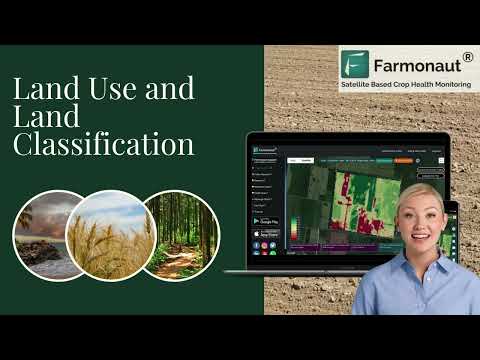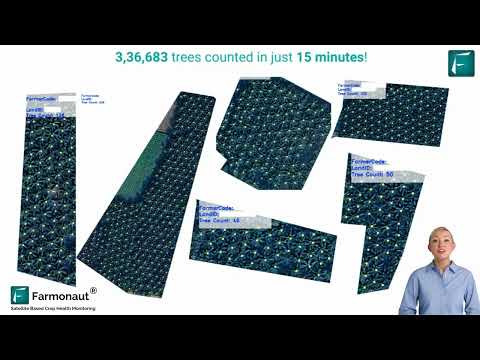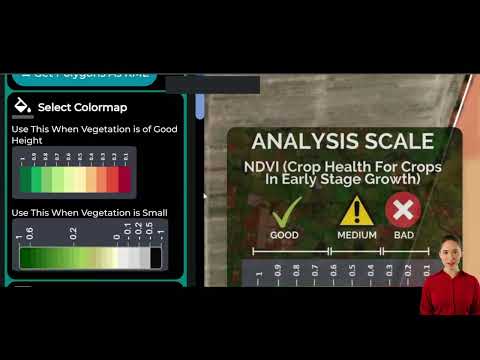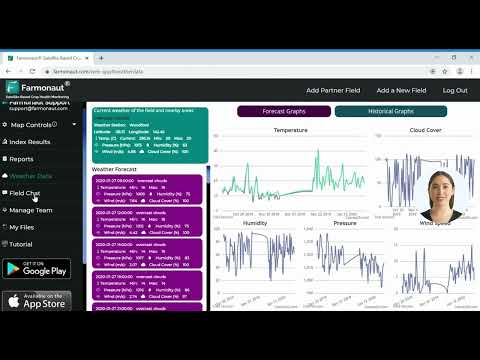Unlocking Geospatial Careers: How Cape Girardeau’s GIS Program Prepares Students for Success in a Rapidly Growing Field
“GIS professionals can work in over 20 diverse sectors, including urban planning, environmental tracking, and disaster risk management.”
In the heart of Missouri, Cape Girardeau is home to a groundbreaking Geographic Information Science (GIS) program that’s shaping the future of geospatial careers. At Southeast Missouri State University, we’re committed to preparing our students for success in this rapidly expanding field. Our innovative GIS program equips future professionals with advanced mapping technology skills and real-world experience, setting them apart in a competitive job market.
As we delve into the intricacies of our program, we’ll explore how it’s revolutionizing the way students approach geospatial challenges and opening doors to diverse career opportunities. From urban planning to environmental tracking and disaster risk management, our graduates are making significant impacts across various industries.
The Growing Importance of GIS in Today’s World
Geographic Information Science has become an integral part of decision-making processes across numerous sectors. As Dr. Seong Nam Hwang, a professor of biology at SEMO, explains, “The GIS program is designed to shape the next generation of geospatial professionals and GIS experts through a combination of hands-on learning, interdisciplinary coursework, and advanced GIS applications.”
The demand for skilled GIS professionals is skyrocketing, with applications ranging from smart city development to precision agriculture. Our program at Southeast Missouri State University is at the forefront of this revolution, providing students with the knowledge and technical skills to tackle real-world challenges.

Hands-On Learning: The SEMO Advantage
What sets our GIS program apart is its emphasis on practical, hands-on experience. “Our students don’t just learn theory,” Dr. Hwang emphasizes. “They collect real-world data using mapping technologies and generate various forms of semantic maps to visually communicate their research findings.”
This approach allows students to:
- Master cutting-edge GIS software and tools
- Develop critical thinking skills for spatial problem-solving
- Gain experience in data collection, analysis, and visualization
- Collaborate on real-world projects with industry partners
By integrating theory with practice, we ensure our graduates are well-prepared for the challenges they’ll face in their geospatial careers.
Interdisciplinary Coursework: Broadening Horizons
Our GIS program goes beyond traditional boundaries, incorporating elements from various disciplines to provide a comprehensive education. Students engage with topics such as:
- Urban and regional planning
- Environmental science and conservation
- Public health and epidemiology
- Business analytics and location intelligence
- Disaster management and risk assessment
This interdisciplinary approach ensures that our graduates are versatile professionals capable of applying their GIS skills across multiple sectors.
Advanced GIS Applications: Preparing for the Future
As the field of GIS continues to evolve, we stay ahead of the curve by introducing students to advanced applications and emerging technologies. Our curriculum covers:
- 3D modeling and visualization
- Remote sensing and LiDAR technology
- Artificial intelligence and machine learning in GIS
- Big data analytics for spatial information
- Web-based GIS and mobile mapping solutions
These advanced skills position our graduates as leaders in the geospatial industry, capable of driving innovation and solving complex spatial challenges.
Real-World Impact: GIS in Action
The applications of GIS extend far beyond the classroom. Our students and graduates are making significant contributions in various fields:
- Urban Planning: Designing smart cities and sustainable communities
- Environmental Tracking: Monitoring climate change and managing natural resources
- Disaster Risk Management: Assessing vulnerability and planning emergency responses
- Agriculture: Implementing precision farming techniques for improved crop yields
- Public Health: Mapping disease outbreaks and planning healthcare services
For instance, in the field of agriculture, tools like Farmonaut’s crop monitoring platform demonstrate how GIS technology can revolutionize farming practices. By leveraging satellite imagery and AI, such platforms enable precise crop health monitoring and resource management, showcasing the practical applications of GIS skills in modern agriculture.

Career Opportunities in GIS
The versatility of GIS skills opens up a wide range of career opportunities for our graduates. As Dr. Hwang notes, “It is commonly estimated that 80 to 90% of government data has a geographic or location-based component, which means that GIS can be applied across industries and government agencies.”
Some of the exciting career paths our students pursue include:
- GIS Analyst
- Urban Planner
- Environmental Scientist
- Geospatial Intelligence Specialist
- Transportation Planner
- Remote Sensing Analyst
- Cartographer
- Location Intelligence Consultant
“The geospatial technology market is projected to grow by 14.2% annually, reaching $502.6 billion by 2024.”
This growth translates to abundant opportunities for skilled GIS professionals across various sectors.
GIS Career Opportunities and Skills Required
| Career Field | Job Roles | Key GIS Skills |
|---|---|---|
| Urban Planning |
– City Planner – Zoning Specialist – Land Use Analyst |
– 3D modeling – Spatial analysis – Land use mapping – Demographics analysis |
| Environmental Management |
– Conservation Scientist – Environmental Analyst – Resource Manager |
– Remote sensing – Ecological modeling – Habitat mapping – Environmental impact assessment |
| Agriculture |
– Precision Agriculture Specialist – Crop Yield Analyst – Agricultural GIS Technician |
– Satellite imagery analysis – Crop health monitoring – Soil mapping – Yield prediction modeling |
| Disaster Risk Management |
– Emergency Response Coordinator – Risk Assessment Specialist – Disaster Mitigation Planner |
– Hazard mapping – Vulnerability analysis – Real-time data integration – Evacuation route planning |
| Government Sectors |
– GIS Coordinator – Public Works Analyst – Census Data Specialist |
– Database management – Policy mapping – Public service planning – Demographic analysis |
Innovative Technologies in Our GIS Program
At Southeast Missouri State University, we’re constantly updating our curriculum to incorporate the latest technological advancements in the GIS field. Some of the cutting-edge tools and techniques we introduce to our students include:
- Drone Technology: Students learn to operate drones for aerial mapping and data collection, a skill increasingly in demand across industries.
- Cloud-based GIS: We utilize platforms like ArcGIS Online to teach students about collaborative mapping and data sharing in real-time.
- Virtual and Augmented Reality: Students explore the potential of VR and AR in creating immersive geospatial experiences and visualizations.
- IoT Integration: Our program covers the integration of Internet of Things (IoT) devices with GIS for real-time data collection and analysis.
These technologies not only enhance the learning experience but also ensure our graduates are well-versed in the tools shaping the future of GIS.
Industry Partnerships and Internships
We believe in the power of real-world experience, which is why our GIS program has forged strong partnerships with industry leaders and government agencies. These collaborations provide our students with invaluable opportunities:
- Internships with local and national GIS firms
- Collaborative research projects with government agencies
- Guest lectures from industry experts
- Access to the latest GIS software and technologies
These partnerships not only enhance the learning experience but also often lead to job opportunities for our graduates.
The Future of GIS: Emerging Trends and Opportunities
As we prepare our students for successful careers in GIS, we keep a close eye on emerging trends that are shaping the future of the field:
- AI and Machine Learning: The integration of AI with GIS is opening new frontiers in predictive modeling and automated analysis.
- 5G and Real-time GIS: The rollout of 5G networks is enabling real-time GIS applications, revolutionizing fields like emergency response and urban management.
- Blockchain in GIS: Exploring the potential of blockchain technology for secure and transparent geospatial data management.
- GIS in Smart Cities: The role of GIS in developing intelligent urban ecosystems is expanding, creating new career opportunities.
Our program ensures that students are not only aware of these trends but are also equipped to leverage them in their future careers.
Student Success Stories
The true measure of our program’s success lies in the achievements of our graduates. Here are a few examples of how our alumni are making an impact in the GIS field:
- Sarah Johnson, Class of 2020, now works as a GIS Analyst for a leading environmental conservation organization, using her skills to map and protect endangered habitats.
- Michael Chen, Class of 2019, has joined a tech startup developing AI-powered GIS solutions for smart city initiatives.
- Emma Rodriguez, Class of 2021, is pursuing a Ph.D. in Geospatial Data Science, focusing on using GIS for climate change mitigation strategies.
These success stories demonstrate the diverse and impactful careers our GIS program prepares students for.
GIS in Agriculture: A Growing Field
One area where GIS is making significant strides is in agriculture. Precision farming techniques, enabled by GIS technology, are revolutionizing the way we grow food and manage agricultural resources. For instance, platforms like Farmonaut’s crop monitoring system demonstrate the practical applications of GIS in modern agriculture.
These advanced agricultural technologies utilize:
- Satellite imagery for crop health assessment
- AI-driven analytics for yield prediction
- GPS-guided machinery for precise planting and harvesting
- Soil mapping for optimized fertilizer application
Our GIS program ensures students are well-versed in these agricultural applications, preparing them for careers in this rapidly growing sector.
GIS for Environmental Sustainability
Environmental sustainability is another critical area where GIS plays a vital role. Our program emphasizes the use of GIS in:
- Climate change modeling and impact assessment
- Biodiversity mapping and conservation planning
- Natural resource management
- Pollution tracking and mitigation
Students learn to use advanced GIS tools to analyze environmental data, create predictive models, and develop sustainable management strategies. This knowledge is crucial for careers in environmental consulting, conservation, and sustainability planning.
For example, tools like Farmonaut’s carbon footprinting feature showcase how GIS technology can be applied to monitor and reduce environmental impact in agricultural settings. This aligns with our program’s focus on preparing students for roles that contribute to sustainable practices across industries.
GIS in Urban Planning and Smart Cities
The application of GIS in urban planning and the development of smart cities is a key focus of our program. Students learn how GIS technologies are transforming urban landscapes through:
- 3D city modeling and visualization
- Traffic flow analysis and transportation planning
- Urban growth prediction and management
- Public service optimization
These skills are essential for careers in urban planning, city management, and smart city development initiatives.
The Role of GIS in Disaster Management
Disaster management is another critical application of GIS that our program covers extensively. Students learn to use GIS for:
- Risk assessment and vulnerability mapping
- Emergency response planning
- Post-disaster damage assessment
- Recovery and reconstruction planning
These skills are invaluable for careers in emergency management, humanitarian organizations, and government agencies responsible for disaster preparedness and response.
GIS in Business and Marketing
The business world is increasingly recognizing the value of GIS in decision-making processes. Our program explores GIS applications in:
- Market analysis and site selection
- Supply chain optimization
- Customer segmentation and targeting
- Geomarketing strategies
Students gain skills that are highly sought after in sectors such as retail, real estate, and marketing analytics.
Research Opportunities in GIS
For students interested in pushing the boundaries of GIS, our program offers numerous research opportunities. Current research projects include:
- Developing AI algorithms for automated feature extraction from satellite imagery
- Exploring the use of blockchain for secure geospatial data sharing
- Investigating the potential of quantum computing in GIS analysis
- Creating new visualization techniques for complex spatial data
These research projects not only contribute to the field but also prepare students for advanced careers in GIS research and development.
Global Perspectives in GIS Education
Our GIS program recognizes the importance of global perspectives in today’s interconnected world. We offer:
- International case studies and projects
- Collaborations with universities worldwide
- Study abroad opportunities focused on GIS applications in different cultural contexts
- Guest lectures from international GIS experts
This global focus ensures our graduates are prepared to work on international projects and in diverse cultural environments.
Continuing Education and Professional Development
The field of GIS is constantly evolving, and our commitment to our students extends beyond graduation. We offer:
- Continuing education courses for alumni
- Professional certification preparation
- Workshops on emerging GIS technologies
- Networking events with industry professionals
These opportunities ensure our graduates remain at the forefront of GIS technology throughout their careers.
Join Our GIS Program Today
As Dr. Hwang emphasizes, “We welcome prospective students to visit and see what we are all about.” Our GIS program at Southeast Missouri State University is more than just an education – it’s a gateway to exciting and impactful careers in a rapidly growing field.
Whether you’re passionate about environmental conservation, fascinated by urban development, or excited about the potential of data-driven decision-making, our GIS program offers the skills, knowledge, and experience you need to succeed.
Join us in Cape Girardeau, and unlock your potential in the world of geospatial science. Your journey to a rewarding career in GIS starts here!
Frequently Asked Questions
- What is GIS and why is it important?
GIS stands for Geographic Information Science. It’s a framework for gathering, managing, and analyzing spatial data. GIS is important because it helps us understand patterns, relationships, and geographic context, enabling better decision-making across various fields. - What career opportunities are available with a GIS degree?
A GIS degree opens doors to careers in urban planning, environmental management, disaster response, agriculture, public health, transportation, and many more fields. Roles include GIS Analyst, Cartographer, Remote Sensing Specialist, and Geospatial Intelligence Analyst. - What skills will I learn in the GIS program at Southeast Missouri State University?
Our program teaches advanced mapping technologies, spatial analysis, data visualization, remote sensing, database management, and programming skills specific to GIS. You’ll also gain critical thinking and problem-solving skills applicable to real-world challenges. - Is prior experience in GIS required to join the program?
No prior experience is required. Our program is designed to accommodate students from various backgrounds, starting with foundational concepts and progressing to advanced applications. - How does the program incorporate hands-on learning?
Our program emphasizes practical experience through field projects, internships, and collaborations with industry partners. Students work with real-world data and scenarios, preparing them for professional challenges.
Earn With Farmonaut: Affiliate Program
Earn 20% recurring commission with Farmonaut’s affiliate program by sharing your promo code and helping farmers save 10%. Onboard 10 Elite farmers monthly to earn a minimum of $148,000 annually—start now and grow your income!
Explore Farmonaut’s GIS Solutions
As you embark on your GIS journey, explore how cutting-edge companies like Farmonaut are applying GIS technologies in real-world scenarios:
- Crop Monitoring Platform: Experience how satellite-based GIS technology is revolutionizing crop health monitoring and management.
- Product Traceability: Learn about blockchain-integrated GIS solutions for ensuring transparency in agricultural supply chains.
- Fleet Management: Discover how GIS technologies optimize agricultural logistics and resource management.
These practical applications demonstrate the diverse ways GIS skills can be applied in the agricultural sector and beyond.
Get Started with Farmonaut
Interested in experiencing GIS applications firsthand? Check out Farmonaut’s platforms:
For developers interested in integrating GIS capabilities into their own applications, explore Farmonaut’s API and API Developer Docs.
As you continue your journey in GIS, remember that the field is constantly evolving. Stay curious, keep learning, and explore the many ways GIS can be applied to solve real-world problems. Whether you’re interested in environmental conservation, urban planning, or agricultural innovation, the skills you’ll gain in our GIS program at Southeast Missouri State University will prepare you for a rewarding and impactful career.
We look forward to welcoming you to our program and helping you unlock your potential in the exciting world of geospatial science!







